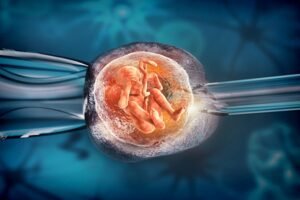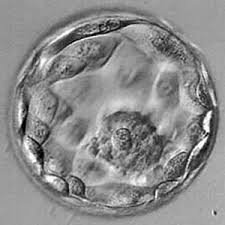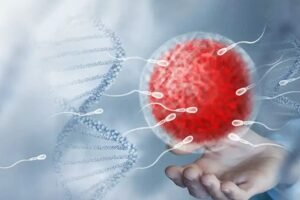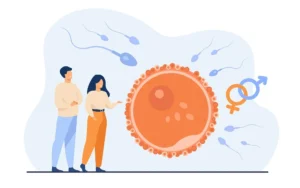
Embryo Freezing (Vitrification)

What is embryo freezing?
A process to freeze and store embryos for later use. An embryo is an egg that has been fertilized by a sperm. The process is a way to help people with fertility and reproduction.
Why would you freeze an embryo?
Embryo freezing often occurs after people have treatments to try to get conceive. IVF & ICSI are those procedures which fertilizes the eggs with sperm and they sometimes create an extra embryos.
You may choose to freeze extra embryos and use them later if you want to:
- Postpone or cancel embryo transfer after an egg is already fertilized.
- Want to delay pregnancy.
- Want an option in case early attempts at fertility treatment fails.
- Embryo freezing is also used for fertility preservation in case of cancer patients before starting chemotherapy or radiation therapy as that treatment could affect their ability to get pregnant.
Does freezing damage embryos?


Freezing can damage embryos, and thawing them later can also damage them. If multiple embryos are frozen, some may or may not survive the process.
Your doctor will guide you on whether your embryos are suitable for freezing, thawing and implantation.
Your doctor will also guide you during which embryonic stage it’s best to freeze one or more embryos. The stages where freezing is possible include:
- Cleavage stage (day 3):- when a single cell has multiplied to between 4-8 cells after about 72 hours.
- Blastocyst stage (day 5):-When the single cell has multiplied to between 200-300 cells after 5-6 days.
Is frozen embryo transfer successful?
- Frozen embryo transfer occurs when an embryo is thawed and implanted into a woman’s uterus, the process is often successful
- But success rates vary widely based on many factors including both partner’s overall health & female age at the time of egg retrieval.
- Presence of fertility issues such as endometriosis, fibroids and uterine polyps.
- Previous success or failure of fertility treatment and pregnancies.
How are the embryos used to begin a pregnancy?
The process is called frozen embryo transfer or FET. To prepare for the embryo transfer , the prospective mother may receive estrogen pills or injections to build up the lining of the uterus , and then progesterone treatment to make the uterus receptive to the embryo.
Alternatively , In natural FET cycle a patient is monitored until ovulation occurs and the embryo is transferred into the uterus approximately 5 days after ovulation.
For more Queries , you can contact our fertility expert.
















